Glossary of Optometry
There are many complicated and complex terms used in optometry and vision science. This page is intended for use as an illustrated glossary of the terms to help trainee ophthalmic professionals and patients alike to understand some of the terminology used in this healthcare field.
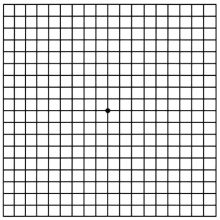
Amsler Grid
An Amsler grid is a tool used by optometrists, ophthalmologists and doctors to detect visual problems caused by damage to the macula (the part of the retina responsible for sharp, central vision). It should appear to be a complete and even grid if your macula is in good health, but if macular disease is present then the grid may appear distorted in size and shape or even have holes or dark patches appear within it.

Aura
An aura is a visual sensation that may be seen prior to an epileptic seizure, migraine or another neurological problem. Auras can vary, with symptoms of flashing lights, coloured illusions and zig-zagging in vision. Some auras also can involve numbness/coldness in other parts of the body, as well as auditory illusions.

Charles Bonnet Syndrome
This condition can occur when a person rapidly has a deterioration in their vision, causing visual hallucinations. These hallucinations can take many forms including simple patterns and shapes, but also can include seeing people, monsters and places. It is caused by the brain filling in the gaps in vision and the problem is caused by failing sight and it is NOT a mental health problem.
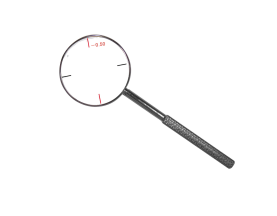
Cross-Cylinder (Cross-Cyl)
The cross-cylinder is a device that has a lens with two equal but opposite astigmatic powers, which allows for the subjective refinement of the astigmatic correction in an optical prescription. As the spherical power is zero, it does not move the circle of least confusion away from the retina, but can increase or reduce the astigmatism found at the level of the retina.

Diplopia
Diplopia is the official term for double vision and is where there is simultaneous perception of two images that are displaced either horizontally, vertically, diagonally or rotationally to one another. It is usually due to an impairment to the functionality of the extraocular muscles of the eyes, but can occur in other abnormal cases, such as in cataract.

Double Vision
Double vision is a common description of the medical condition known as diplopia and occurs when there is simultaneous perception of two images that are displaced either horizontally, vertically, diagonally or rotationally to one another. It is usually due to an impairment to the functionality of the extraocular muscles of the eyes, but can occur in other abnormal cases, such as in cataract.
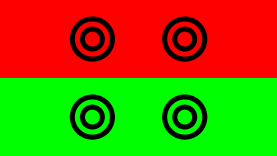
Duochrome
The duochrome is a test used in optical refraction that makes use of the chromatic aberration of the eye to refine the spherical component of a person's optical prescription. If the figures on the red are clearer, they are over-plussed or under-minused. If the figures are clearer on the green, then they are over-minused or under-plussed. If the figures are equal on both, the eye requires no further plus or minus.
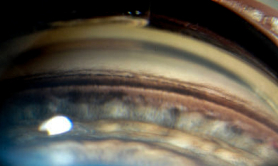
Gonioscopy
Gonioscopy is the visual examination of the anterior chamber angle, which occurs through a special type of contact lens. This lens is called a goniolens. This procedure is often performed during a glaucoma work up.
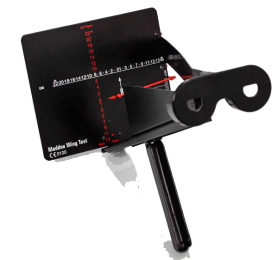
Maddox Wing
The Maddox Wing is a tool used by orthoptics, ophthalmologists and optometrists to check ocular alignment at near. Dissociation of the eyes is achieved by looking through the eyepieces with the scale and measurement arrows separated by septa, allowing for quantitative measurement of heterophoria and heterotropia at near.

Migraine Aura
Migraine auras are visual sensations that may be seen prior to a migraine headache. Symptoms can include coloured lights in vision, flashing lights or zig-zagging in vision. Usually these auras precede a migraine headache and last 20-30 minutes before the headache begins. Must be determined from other causes of photopsia (flashes) at any eye examination.
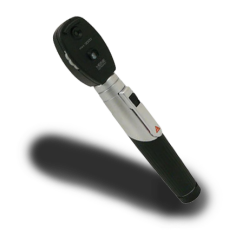
Ophthalmoscope
An ophthalmoscope is a tool used to examine both the external and internal surfaces of the eye. It essentially consists of an aperture containing a split mirror that shines light to illuminate the eye and allows visualisation of the illuminated structures.
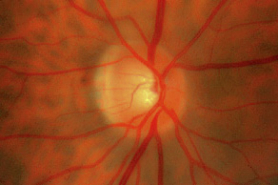
Optic Nerve Head (ONH) / Optic Disc
The optic nerve head is the ocular end of the optic nerve, It is where the retinal nerves leave the eye and enter the optic nerve and also where the retinal blood supply enters the eye. It is an area of importance as this structure can denote the presence of glaucoma, as well as a whole host of optical and neurological diseases.
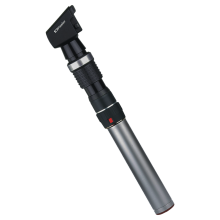
Retinoscope
The retinoscope is a tool that allows an optical professional to determine the refractive error of an eye by allowing the professional to observe the lights and shadow movement within the pupil when the retinoscope light illuminates the retina.

Sunglasses
Sunglasses are a form of protective eyewear to protect the wearer from the effects of bright sunlight and the associated affects of ultraviolet radiation. Additionally the tints in the lenses allow for reduction of glare, to aid visual comfort in bright conditions, or during cases of photophobia. They are also now worn as a fashion accessory.
